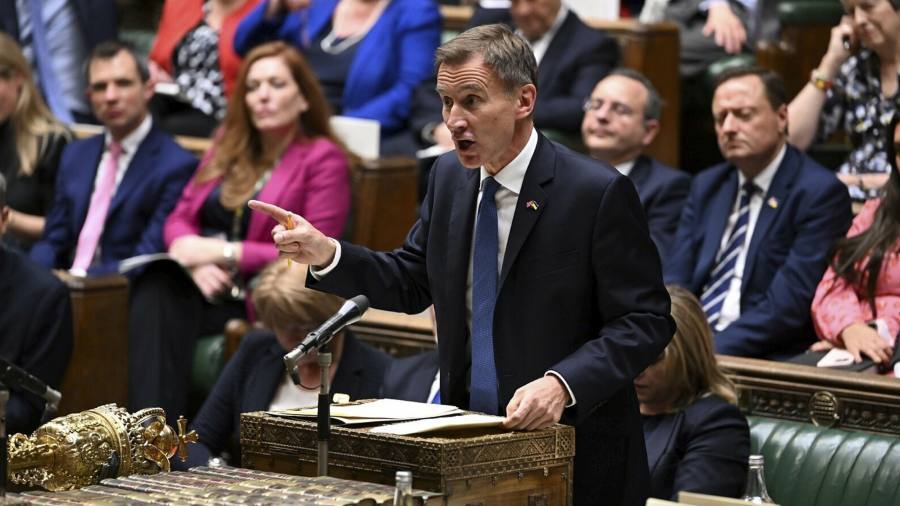[ad_1]
Ever since Liz Truss spooked financial markets seven weeks ago with a splurge of unfunded tax cuts, Britain has become a global case study of how not to manage public finances in an era of soaring inflation and rising interest rates. Jeremy Hunt, the UK’s fourth chancellor since July, needs to redress that at Thursday’s autumn statement by putting the country’s debt on to a sustainable path. If the government sets a five-year target, that could cost over £50bn in tax rises and spending cuts — about 2 per cent of gross domestic product. It will be a necessary price to pay to help Britain regain its credibility, but will involve a tricky juggling act.
Hunt’s plan will need to satisfy markets, his party and voters, while limiting damage to the economy. That will not be easy. Bank of England forecasts last week showed the UK is slipping into a protracted recession. A rapid tightening would worsen the economic pain on top of a decade of lacklustre growth. With the cost of living soaring and public services stretched, tax hikes and spending cuts will be particularly unwelcome. But to reassure investors the chancellor needs to unveil credible measures that curtail the government’s borrowing needs. Too much delay risks upsetting financial markets, raising gilt yields and deepening the fiscal hole.
Hunt will need to show investors that the fiscal arithmetic actually adds up. Aiming for a falling debt-to-GDP ratio in five years is already less stringent than prior fiscal rules. Since Truss resigned, however, the markets have calmed: gilt yields and expectations for the Bank’s interest rate path have fallen and Hunt is considered a safer pair of hands than his reckless predecessor, Kwasi Kwarteng. But that could turn quickly. The war in Ukraine remains an unknown quantity and inflation could prove more persistent. Falling short of the absolute consolidation needed to get the debt ratio falling by 2027-28 is therefore unwise.
The challenge is selecting from a menu of austere measures that would do the least harm to an already distressed economy while raising enough funds. Spending cuts tend to dampen economic activity more than tax rises, but there are few easy options to raise large revenues quickly. Raising income tax and national insurance significantly is politically fraught, while higher VAT would raise inflation in the short term. Hunt is likely to rely on stealth tax rises: freezing various thresholds and allowances. Spending will not escape the knife. This means apportioning cuts between already strained departmental budgets and public investment, which is important for growth.
While the focus will be on the government’s bottom line, Hunt must not entirely sideline the growth agenda: any boost to potential growth will improve the fiscal arithmetic. Given the fiscal quagmire Britain is in, a lot may not be possible, but sensible measures do exist. More generous tax allowances could incentivise business investment at low cost. Initiatives to help inactive individuals return to employment — which is still below its pre-pandemic levels — are also key. So is avoiding cuts to the skills and education agenda. Indeed, a better growth outlook could give the government space to wind back on its tightening later.
Prime Minister Rishi Sunak and Hunt have a huge economic and political puzzle ahead of them. The size of the fiscal consolidation required is on a par with Britain’s 2010 “austerity” budget. But this time, the chancellor will have to roll it out when inflation is near a 40-year high and interest rates are rising. The fiscal plan needs to appease many. But if it fails to satisfy markets, it will leave Britain’s international credibility even more in tatters.
[ad_2]
Image and article originally from www.ft.com. Read the original article here.

